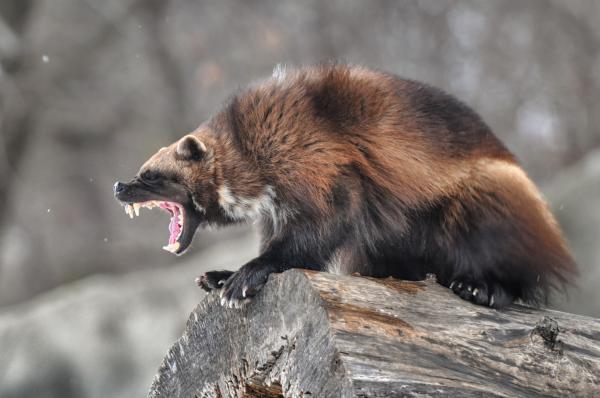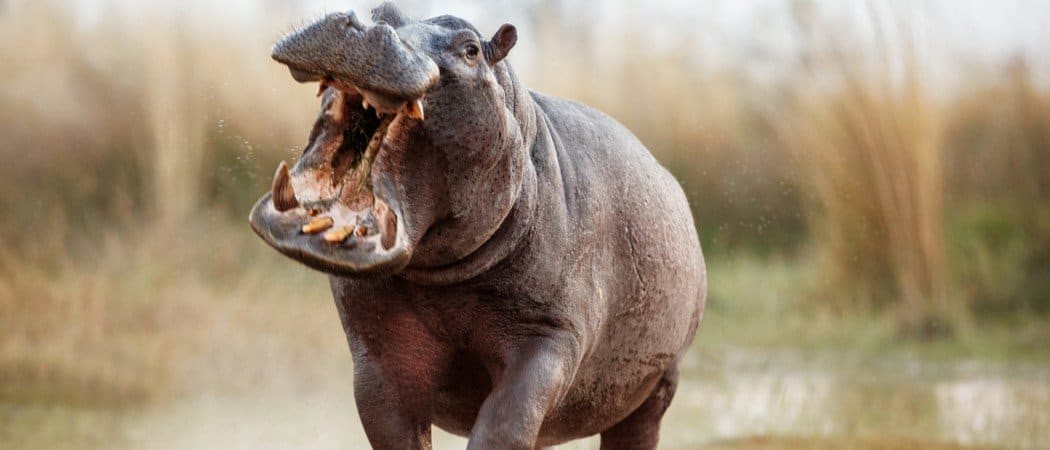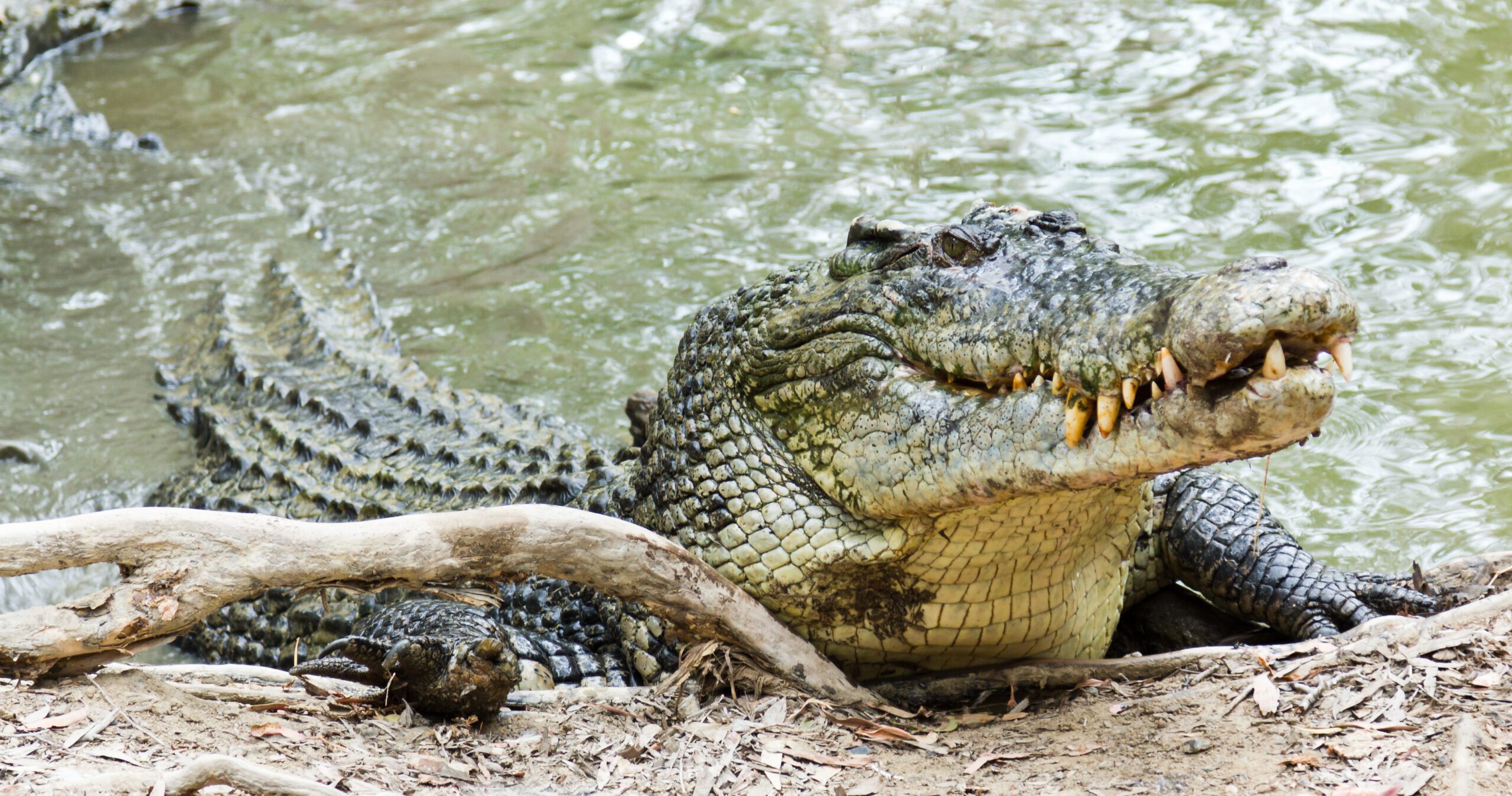Aggression is a common behavior in the animal kingdom, serving various functions such as competition for resources and mates, self-defense, and protection of territory or young. However, when it comes to animals that are particularly aggressive towards humans, it can be a matter of life and death.
Aggression is defined as reacting purposefully and violently through biting, stinging, kicking, trampling, goring, or other behavior after what appears to be not a great deal of provocation. Once the aggression starts, it is not easily stopped. The animal’s aggression also depends on their mood, whether they’re well-fed, the time of day, whether they have territory or young to defend, and other factors.
You are reading: Top 8 Most Aggressive Animals In The World
In this article, we will list the top 8 most aggressive animals in the world, according to various sources.

Top 8 Most Aggressive Animals In The World
Hippopotamus

Hippos are known to be one of the most aggressive animals in the world, despite being herbivorous. They are territorial and fiercely protective of their young, and will attack humans as a defensive measure, usually when they feel their territory or young are threatened. Hippos are responsible for killing over 500 people in Africa each year, making them the world’s deadliest mammal after humans.
Hippos are known to attack and capsize boats, and will not tolerate humans getting between them and the water. Females are particularly defensive and aggressive if anyone gets between them and their young. Hippos kill roughly 500 people every year with their giant 20-inch (50 cm) canine tusks.
Despite their large size and seemingly slow movements, hippos can run faster than Usain Bolt and have a powerful bite force of 2,000 pounds per square inch. If you spot a hippo, yawning is a sign of aggression and them telling you that you are too close. It is therefore vital to avoid inciting an attack in the first place, whether on land or on the water (in a boat or canoe).
Hippos that are not stressed are generally placid creatures and are not a threat, especially if given enough space and sufficiently deep water in which to submerge themselves.
Saltwater Crocodile

The saltwater crocodile, also known as the estuarine crocodile, Indo-Pacific crocodile, marine crocodile, sea crocodile, and saltie, is the largest living reptile and crocodilian known. It is a formidable predator throughout its range, capable of eating just about any animal that strays too close and is particularly adept at drowning terrestrial creatures like birds and mammals.
Saltwater crocodiles of this size are known to show aggression towards humans, partly as a result of their strong territoriality, and are responsible for at least several dozen attacks on people each year. In fact, the saltwater crocodile is the animal most likely to eat a human.
The saltwater crocodile is an opportunistic predator that lurks patiently beneath the surface near the water’s edge, waiting for potential prey to stop for a sip of water. They are excellent swimmers and have often been spotted far out at sea. The saltwater crocodile is the only species of crocodile to exhibit agitated tail twitching followed by lunging head movements, which is a warning sign of aggression.
African Elephant
Read more : The World’s Top 10 Non Traditional Pets
African elephants are known to be one of the most intelligent and social animals on the planet. However, they can also be very aggressive, especially during musth, a periodic condition in bull elephants characterized by aggressive behavior and accompanied by a surge in testosterone levels.
During musth, male elephants announce a state of heightened aggression with signals that are unbluffable. The elephant’s aggression may be partially caused by a reaction to the temporin, which naturally trickles down into the elephant’s mouth. Another contributing factor may be the accompanying swelling of the temporal glands, which presses on the elephant’s eyes and causes acute pain comparable to severe toothache.
Cases of rogue elephants randomly attacking native villages or goring and killing rhinoceroses without provocation in national parks in Africa have been attributed to musth in young male elephants, especially those growing in the absence of older males. Reintroducing older males into the elephant population of the area tends to prevent younger males from entering musth, and therefore ameliorates this aggressive behavior.
High-intensity aggression is rare in African elephants, and they are generally peaceful animals. However, they can exhibit threat behaviors and fight behavior when provoked. Male elephants are more aggressive when fewer older males are present, and wise old elephants can tamp down fear and aggression in younger males.
Cape Buffalo
The Cape Buffalo, also known as the African Buffalo, is widely considered to be the most dangerous member of the Big Five, a term coined years ago to categorize the most dangerous game to hunt on foot. Nowadays, the Big Five is simply a marketing descriptor for the big game and elusive cats that safari-goers eagerly seek to find.
Despite their bulky appearance, Cape buffaloes are not placid animals and are known to play a dangerous game. They are unpredictable and can charge at speeds of up to 50 km per hour, targeting anything that crosses their path. If wounded or if a calf or a weak member of the herd is under attack, Cape buffaloes are the most aggressive and will not hesitate to attack and go for the kill, regardless of whether the attacker is a human or a lion.
In fact, Cape buffaloes are said to have killed more people than any other member of the Big Five, with over 200 people killed by them each year in Africa. Herds consist of 50-500 animals, and old males may become solitary. The species is notoriously ill-tempered, and a wounded buffalo is considered by many to be one of the most dangerous animals in Africa.
Here are some reasons why Cape buffaloes are considered the most dangerous of the Big Five:
– They are unpredictable and can charge at any time, even without provocation.
– They are known to circle around their enemy and counter-attack instead of fleeing when wounded.
– They are highly protective of their young and will attack anything that they perceive as a threat.
– They are formidable animals because of their large size, large herds, and large horns.
– They are known to lie in wait for pursuers and charge at the last minute, making them difficult to hunt.
Grizzly Bear
Grizzly bears are the top predators in the food chain, and they are known for their massive size and strength. They can consume a variety of foods, including leaves, berries, fruits, roots, nuts, rats, and moose. They are also excellent sprinters and marathoners, capable of covering up to 30 miles in an hour despite their giant-like size. Grizzly bears are not naturally aggressive towards humans, and encounters in the wild are usually peaceful.
However, if they feel threatened, provoked, or if their cubs are in danger, they can become deadly. Female grizzly bears, in particular, are known to be very protective of their young and will not hesitate to attack if they feel their cubs are in danger. When a grizzly bear is stressed or feels threatened, it may display certain behaviors such as moaning, woofing, jaw popping, ears pinned back, a stiffening stance, excessive drooling, head bowing, and paw swatting.
In most situations, a grizzly bear will act defensively, and if you are not perceived as a threat, the bear should leave the area. However, if a grizzly bear does attack, it can be deadly. Grizzly bears have a powerful biting force of 1,000 psi that can split a human body in half in a matter of seconds.
It is important to remain calm, slowly back out of the area, and have a defense ready if you come across a grizzly bear acting aggressively or defensively. Bear spray is an effective deterrent that is designed to stop a bear attack and should be carried when traveling in grizzly bear country.
Honey Badger
The honey badger, also known as the ratel, is a small mammal found across much of Africa and Asia. Despite its small size, the honey badger is known for its aggressive and fearless attitude towards other animals, even larger predators such as lions and leopards.
Read more : The Different Types Of Bed Bugs
Here are some reasons why honey badgers are considered one of the most aggressive animals in the world:
– Honey badgers are known to attack animals much larger than themselves, including lions and leopards.
– They have sharp teeth and claws that can crack a tortoise shell and dig through hard ground.
– Honey badgers usually only attack when surprised by predators, which often happens when they are digging with their noses in the ground.
– They are nocturnal creatures and are known for being vicious, fearless, and aggressive.
– Honey badgers are solitary animals and are not afraid to take on any creature that poses a threat to them, including humans.
Despite their reputation as the world’s most fearless animals, honey badgers try to avoid confrontation when possible and will only attack when they feel threatened. They are also known for their intelligence and problem-solving skills, which they use to find food and escape danger.
Black Mamba
The black mamba is a highly venomous snake that is native to sub-Saharan Africa. It is known for its speed, nervousness, and highly aggressive behavior when threatened. Here are some reasons why the black mamba is considered one of the most aggressive animals in the world:
– Black mambas are fast, nervous, and highly venomous, making them a deadly threat to humans and other animals.
– They are known for their aggressive behavior when threatened or cornered, and may react more aggressively than other snakes.
– Black mambas are capable of striking at considerable range and may deliver a series of bites in rapid succession.
– Their venom is primarily composed of neurotoxins that often induce symptoms within ten minutes, and is frequently fatal unless antivenom is administered.
Despite their reputation as a formidable and highly aggressive species, black mambas are rated as least concern on the International Union for Conservation of Nature (IUCN)’s Red List of Threatened Species. They are skittish and often unpredictable, and seldom tolerate humans approaching more closely than about 40 meters (130 ft).
When confronted, they are likely to engage in a threat display, gaping to expose their black mouths and hissing. It is important to avoid provoking or threatening black mambas, and to seek immediate medical attention if bitten by one.
Box Jellyfish
The box jellyfish is considered one of the most aggressive animals in the world, primarily due to its potent venom, which is considered to be among the most deadly in the world. Here are some reasons why the box jellyfish is considered one of the most aggressive animals in the world:
– Box jellyfish have tentacles covered in biological booby traps known as nematocysts, which are tiny darts loaded with poison.
– The venom of the box jellyfish contains toxins that attack the heart, nervous system, and skin cells, and can cause paralysis, cardiac arrest, and even death within a few minutes of being stung.
– The Australian box jellyfish, which is the largest of the box jellyfish, is considered the most venomous marine animal in the world, with body sizes reaching up to one foot in diameter and thick, bootlace-like tentacles up to 10 feet long.
– While box jellyfish are found in warm coastal waters around the world, the lethal varieties are found primarily in the Indo-Pacific region and northern Australia.
Despite their reputation as one of the most aggressive animals in the world, box jellyfish are not naturally aggressive towards humans and will only attack if they feel threatened or provoked.
It is important to avoid swimming in areas where box jellyfish are known to be present, and to seek immediate medical attention if stung by one.
FAQS
1. What makes an animal aggressive?
Aggression in animals can be defined as reacting purposefully and violently through biting, stinging, kicking, trampling, goring, or other behavior after what appears to be not a great deal of provocation. The animal’s aggression also depends on their mood, whether they’re well-fed, the time of day, whether they have territory or young to defend, and other factors.
2. Are all aggressive animals harmful to humans?
Not all aggression is harmful, and some animals use it in a ritualized way that does not lead to injury. Also, aggression is not always physical, in some cases, it can be vocal, posturing, or even chemical.
3. What should I do if I encounter an aggressive animal?
It is important to avoid provoking or threatening aggressive animals, and to seek immediate medical attention if injured. If you come across an aggressive animal, slowly back away and avoid making direct eye contact. Do not run, as this may trigger a chase response. If you are attacked, try to protect your vital organs and use any available objects to defend yourself.
4. Which animal is the most aggressive?
The most aggressive animal depends on the context and the definition of aggression. However, some animals that are known for their aggressive behavior towards humans include the hippopotamus, saltwater crocodile, African elephant, Cape buffalo, grizzly bear, honey badger, black mamba, and box jellyfish.
5. How can I avoid encountering aggressive animals?
To avoid encountering aggressive animals, it is important to research the area you will be visiting and take appropriate precautions. This may include avoiding areas where aggressive animals are known to be present, traveling in groups, making noise to alert animals of your presence, carrying bear spray or other deterrents, and following local guidelines and regulations.
Source: https://petstutorial.com
Category: Animals










